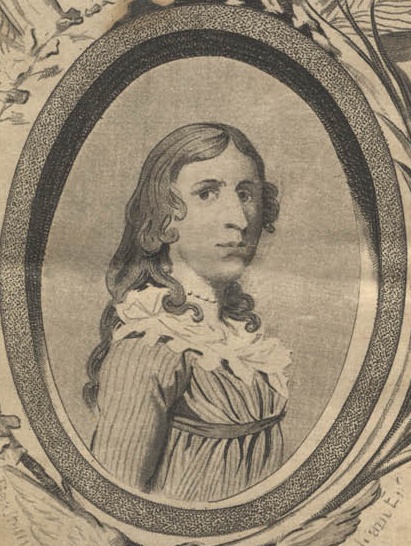
Since American women were not allowed to serve as soldiers during wartime, some disguised themselves as men and fought along their side, keeping their femininity a secret. Such is the case of Deborah Sampson, a dedicated patriot, passionate to serve.
In her early 20s, Sampson strategically avoided medical care at all cost for fear of her secret being revealed as she served in the American Revolution disguised as the soldier Robert Shurtlieff. Sampson created her alias in 1780 after she was freed from indenture on a farm. She bound her chest and concealed her gender in order to enlist in the Fourth Massachusetts Regiment in the Continental Army.
Despite Sampson’s direct lineage to distinguished Pilgrims, she grew up poor. Her mother, who found herself unable to support her seven children after her husband went missing during a sea voyage, placed Sampson and her siblings in other homes. Sampson lived in two different homes from age 5 to 10. At 10, she became an indentured servant to Deacon Benjamin Thomas, a farmer with a large family. Released from her servitude at 18, Sampson made a living teaching – thanks to her self-education – and worked as a weaver.
First taste of battle
It was during this time Sampson resolved to disguise herself as a man and enlist in the spring of 1781.
She soon experienced the taste of battle when British sympathizers and troops attacked her unit. War quickly became real as Sampson withstood the enemy’s persistent barrage, endured blisters while digging trenches, suffered a gash in her forehead from a sword, and was shot in her left thigh. Terrified she would be found out, she hid her injury from the doctor and removed the pistol ball herself. She was medically cleared to rejoin the Army before the wound completely healed.
When Sampson received authorization to nurse a fellow soldier back to health in a private home, she was relieved because it gave her the time needed for her leg to completely heal and recover.
No longer a secret
For more than two years, Sampson successfully kept her deepest secret in spite of the many close calls. Then, a fever swept through the troops, and Sampson was believed to have succumbed to the illness. A doctor, suspecting the young soldier to be dead, checked Sampson’s pulse and placed his head on her chest to see if she was still breathing. She was, and the surprised doctor quickly discovered the truth behind the “man” he was treating.
Although Sampson was not allowed to continue as a soldier, she received an honorable discharge and money for her trip home. A year and a half later, she married Benjamin Gannett, and they had three children.
Sampson became the first woman to go on tour and lecture about her time in the Army. She requested back pay for her service and received it in 1792. Congress voted in 1805 to approve a pension for her as a war veteran. After she died at age 66, Sampson’s husband petitioned to receive payment as the spouse of a soldier. Even though they were not married during Sampson’s time of service, his request was granted.
This is part of a series celebrating National Women’s History Month.
In the spirit of Service, Not Self, the mission of the American Legion Auxiliary is to support The American Legion and to honor the sacrifice of those who serve by enhancing the lives of our veterans, military, and their families, both at home and abroad. For God and Country, we advocate for veterans, educate our citizens, mentor youth, and promote patriotism, good citizenship, peace and security.